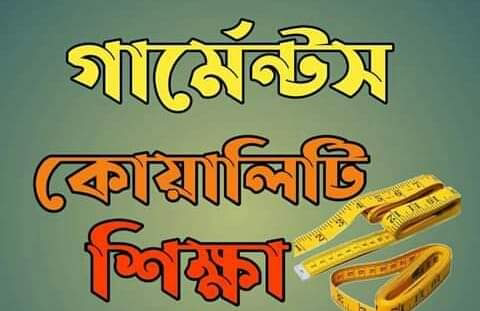Up to date topics for projects thesis and research on textile.
The textile industry is the most important sector in Bangladesh economy. Though we are 2nd in world textile market, it’s a matter of sorrow that we are far behind from China. And several countries ( India, Pakistan, Vietnam, Cambodia, Indonesia etc) are our close competitor. Day by day the textile sector of BD become narrower unless we overcome the barrier. It’s high time to do something innovative to expand our beloved sector.
Here is some topic, that we should consider strongly.
The textile related people can make several projects, thesis and research on those topics that help our industry to go ahead.
Sustainability
1. Creating our own brand.
2. Create availability Strong backward linkage.
3. Use the latest technology: Vortex (air jet), Siro technology(By which we can produce 100 % synthetic yarn)
4. Focusing native resource rather than importing.
5. HRM and Zoning ( select the right place for the industry)
6. Communication importance.
7. Focus on Technical textile.
8. Focus on factory environment.
Green project.
1. ZDHC ( Zero Discharge Hazardous Chemical)
2. The CO2 footprint measure ( software)
3. Reuse of Water from ETP.
4. Air dyeing(water consumption and reduction)
5. The biological solution for hazardous chemical degradation.
6. Recycling of plastic or alternative of plastic.
7. Solvent dyeing and Natural dyeing,
8. Cold batch pad dyeing ( at room temperature.)
9. Sludge management.
10. ETP project at lower cost.
11. Air purifying fabric.
Utility
1. 3R ( Reduce, Reuse and Recycle water)
2. Recycling , B2T ( Bottle(plastic) to Textile) , T2T ( Textile to Textile)
3. LNG ( Liquefied Natural Gas.
4. Cold pad batch dyeing ( Dyeing at room temperature).
5. Salt recovery, Heat recovery, ETP ( Effluent Treatment Plant)
6. Solar panel. Windmill. Sensor-based automated factory.
7. Conversion of energy. Bio-gas plant from textile wastage.
Service
1. LT ( Lead Time) reduction.
2. Blue supply
3. PPM ( Price Per minute) i.e how much money produce per minute in a factory.
4. 2M ratio ( Man and Material ratio), i.e how much material can control per man.
5. Transportation development
6. Improving compliance
7. The relation between suppliers, producers and buyer.
8. Training of workers.
9. Improving L/C facilities. ,
10. Two shift in garment production.
11. Implementation of modular and unit production system.
Quality
1. Managing batch no or bale no. (Use of Barcode system in bale management. )
2. WIP effimax barcode on the fabric.
3. ERP (Entrepreneur Resource Planning )
4. Plaited jersey (3 layers knitted fabric)
5. Improving on containing M.C level.
6. Lack of automation.
7. Implementation of ERP in industries.
8. Implementation of six sigma practice in the industry.
9. Better equipment. Skilled human resource.
10. Improving sewing line efficiency. Simulation in apparel (Shima Seiki SDSTAPEX-3)
Raw materials
1. Remove the lack of organic cotton usage.
2. Increasing diversified use of jute.
3. Remove lack of synthetic yarn/ fiber production.
4. Improving the reuse of cutting wastage.
5. Recycling scope of denim and jeans.
6. Banana fiber usage scope.
7. Blended yarn from natural fibers.
8. Recycling of sugarcane waste (Cellulosic)
9. ANHF fiber( coir fiber), Jute leaf(composite plastic)
10. Pineapple fiber recycling. Conductive yarn, Cotton import control.
11. Water hyacinth fiber. Bamboo fiber.
Finish goods and process.
1. Anti-dust performance of the fabric.
2. Fireproof coating development
3. Water-repellent performance
4. Biodegradable,
5. Health hazard.
6. Auto-motion,
7. Process development,
8. Eco-friendly by a process,
9. Development of m/c design,
10. Removal of sizing process,
11. Customer oriented process.
12. Transparent Fabric (Optical),
13. Diversification of yarn(Metalic, conductive yarn)
14. Non-washable apparel,
15. Recycle garments (Denim waste ),
16. Soil resistance jute fabric
17. Polyester fiber dyeing process development.
18. Surface modification by plasma technology( polyester)
19. Medical textile (suture, bandage
20. viscose from jute,
21. Denim enzymatic finish,
22. Waterproof breathable garments.
Functionality
1. Use of Nano-technology,
2. In automobile engineering,
3. Should start development in Agro-textile.
4. Should start investment in aerodynamics.
5. Geo-textile, Electronic textile,
6. Should invest in the medical textile
Fabric
1. The scope of technical textile.
2. Fabric with the anti-microbial property.
3. Self-cleaning fabric.
4. Breathable fabric.
5. Waterproof fabric( Lotus effect).
6. Smart textile development.
7. Double duty fabric.
8. 3D printed fabric.
These ideas and informations are collected from a workshop which held on textile talent hunt season 6 in Dyesin chemical companies head office carried by a country manager arranged by Textile Today



















কোন মন্তব্য নেই:
একটি মন্তব্য পোস্ট করুন